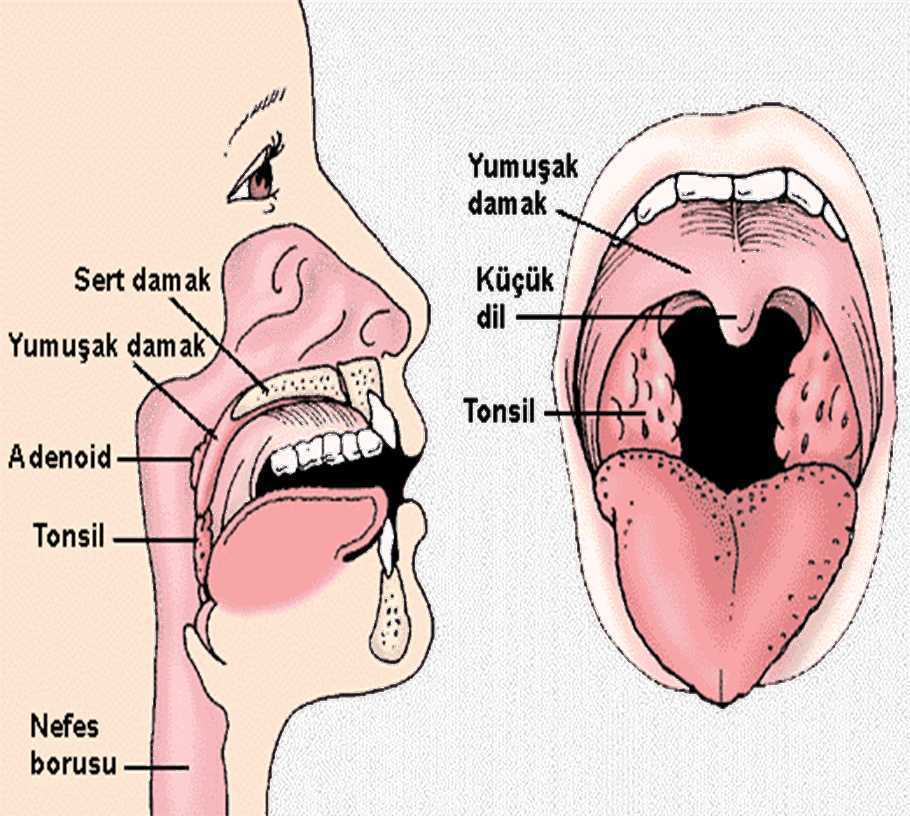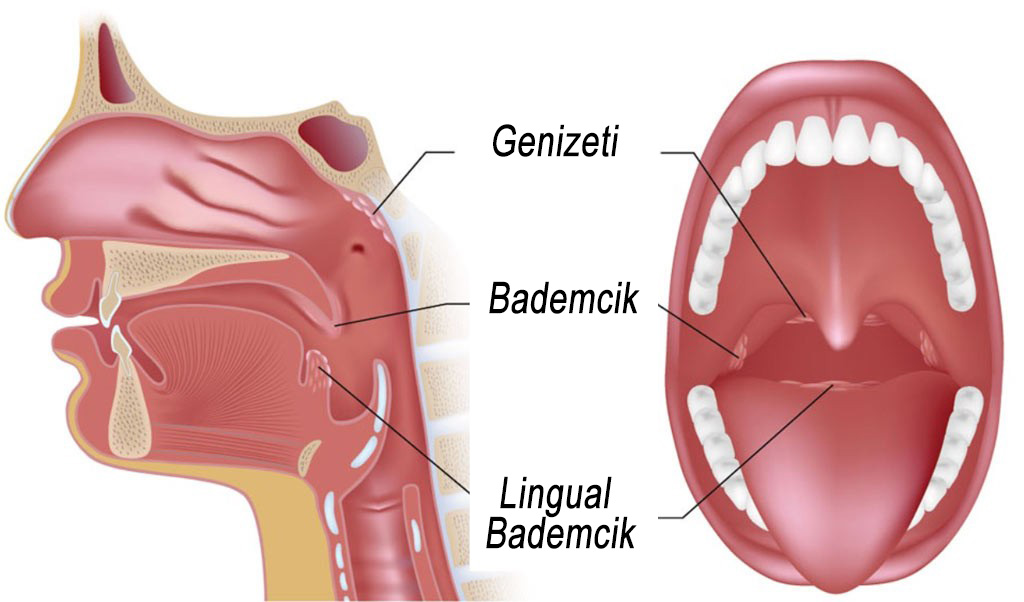Adenoid adenoidectomy is surgery to remove your child’s adenoid glands. Your child may need this surgery if the adenoid is swollen or enlarged due to an infection or allergy. If your child is experiencing breathing problems or frequent ear and sinus infections due to enlarged adenoids, adenoid surgery may be helpful.
Adenoid Adenoidectomy
Overview
Adenoids located at the back of the mouth.

Adenoid Adenoidectomy
What is adenoidectomy?
An adenoidectomy, or adenoid removal, is surgery to remove your child’s adenoid glands . Adenoids are small lumps of tissue located behind your nose in your upper respiratory tract. Adenoids are considered a vestigial organ in adults (a remnant without a purpose). Adenoid Adenoidectomy
Adenoid glands are part of your child’s immune system . They fight germs you breathe, such as viruses and bacteria. Adenoids usually shrink and disappear by the time most children reach age 13.
While the adenoid helps protect your child’s body from viruses and bacteria, it sometimes swells and grows. This swelling ( inflammation) may be caused by infections, allergies or other reasons. Some children may also be born with abnormally large adenoids.Adenoid Adenoidectomy
Swollen adenoids may need to be surgically removed if they are partially blocking your child’s airway.
Who needs adenoidectomy?
Adenoidectomy is mostly for children ages 1 to 7. Children’s adenoids naturally begin to shrink around the age of 7 and almost completely disappear by puberty.
What does adenoidectomy treat?
Adenoidectomy treats enlarged adenoids that may cause problems by partially blocking your child’s airway. A narrowed airway can cause a number of problems that require treatment, including:
- Difficulty breathing : Your child may have difficulty breathing during the day and when trying to sleep. In more serious cases, swollen adenoids can cause sleep apnea , which causes you to stop breathing at night.Adenoid Adenoidectomy
- Difficulty sleeping : Your child may snore and have difficulty sleeping. They may be irritable during the day because they do not get enough rest at night.
- Ear infections : Your child may get frequent ear infections and chronic fluid in the ear, which can cause temporary hearing loss.
- sinus infections : Your child may experience chronic (long-term) runny nose, congestion, and frequent sinus infections.
How does your doctor determine if your child needs an adenoidectomy?
After taking a health history, a healthcare professional will examine your child’s adenoids with an X-ray or a small camera inserted into your child’s nose.
Depending on your child’s symptoms and the appearance of the adenoid, your provider may recommend adenoid removal.Adenoid Adenoidectomy
How common is adenoid surgery?
Adenoid removal is extremely common. It is one of the most common surgeries that children receive.
Procedure Details
How should I prepare for adenoidectomy?
Follow your healthcare provider’s instructions about what medications your child should or should not take in the days and weeks before surgery. For example, your doctor may advise you to avoid aspirin, ibuprofen, and other medications that can thin your child’s blood.Adenoid Adenoidectomy
Follow your provider’s instructions about fasting (temporarily not eating or drinking). Your child’s stomach must be empty for surgery.
You should also monitor your child for signs of a cold, flu, or other respiratory infection. If your child gets sick beforehand, your provider may recommend postponing the surgery.
What happens during adenoidectomy?
An adenoidectomy is a simple, relatively short procedure performed by an ear, nose, and throat (ENT) surgeon. Most children go home the day of their surgery.
- Your child will be put under general anesthesia , meaning he will be asleep the whole time. They will not feel any pain.
- The surgeon will open your child’s mouth while he is asleep and remove his adenoids. They will perform the surgery through your child’s mouth, which means they will not have to make visible cuts (incisions) in your child’s skin.
- The surgeon may apply a heated wire to the incision in your child’s mouth to stop bleeding. This technique is called electrocauterization surgery.
The surgeon may also remove your child’s tonsils ( tonsillectomy ) if they are swollen and causing symptoms. These surgeries are often done together.
How long does an adenoidectomy take?
An adenoidectomy is a quick procedure. The surgery only takes about 30 minutes.Adenoid Adenoidectomy
What happens after an adenoidectomy?
Members of your child’s care team will take your child to the recovery room, where he or she will wake up from anesthesia. When your child wakes up, a provider will make sure he or she can breathe, cough, and swallow.
You will probably be able to go home the same day. If your provider wants to monitor your child, they may need to stay in the hospital overnight.Adenoid Adenoidectomy
Risks / Benefits
What are the benefits of adenoid removal?
Adenoidectomy is a safe surgery that can relieve your child’s symptoms. Although adenoids are part of your child’s immune system, removing the adenoids does not weaken the immune system. Their immune systems are extremely adaptable. Your child doesn’t need adenoids to fight germs. They will actually be healthier without enlarged adenoids.
What are the risks of adenoidectomy?
Adenoidectomy is a safe procedure. Still, as with any surgery, there are potential (but rare) risks.Adenoid Adenoidectomy
They include:
- infection.
- Mild pain.
- Response to anesthesia.Adenoid Adenoidectomy
- Excessive bleeding (very rare).
- Permanent changes in sound quality.
- Failure to resolve underlying breathing problems, ear infections, or runny nose.
It is also possible for your child’s adenoids to regrow. Because the adenoid is so far back in your child’s nasal passage, it is impossible to remove all traces of the tissue. If the tissue continues to cause problems, your child may need two surgeries. This is extremely rare.Adenoid Adenoidectomy
RECOVERY AND VIEW
What is the prognosis (outlook) for a child who has had an adenoidectomy?
After an adenoidectomy, a child almost always recovers completely. Children continue to live healthier lives with much fewer breathing and ear problems. The immune systems of children without adenoids are as strong as those of children with adenoids.Adenoid Adenoidectomy
What is the recovery time for adenoidectomy?
Your child should recover within a week or two after surgery. In the meantime, they may experience symptoms such as:
- Vomiting or stomach upset (within the first 24 hours).
- Fever (for the first day or two after surgery).
- Bad breath (for several weeks).
- Difficulty swallowing.
- noisy breathing
- sore throat
- Neck pain.
- Earache _
Your child may need painkillers for a few days during the recovery process. Your provider may prescribe pain medications in liquid form that will be easier for your child to swallow.
How can I care for my child during recovery?
Follow your doctor’s instructions about how much rest your child needs and what activities he should avoid. To protect your child while they recover, avoid places where they could be exposed to germs that could make them sick. It’s also a good idea to avoid smoky environments that can irritate the nasal passages.Adenoid Adenoidectomy
Your child may have difficulty tolerating certain foods during the recovery period. As a rule, stay away from spicy, crunchy or acidic (like citrus) foods that can irritate their throat and nasal passages. Instead, encourage them to eat and drink other than these foods:
- Cold foods like popsicles and ice cream.
- Soft foods like Jell-O®, pudding, and mashed potatoes.
- Liquids, including water, non-acidic juices, and soup.
When can my child return to school?
Follow your provider’s instructions about when it is safe to return to school. Many children need at least a week away from school to rest as part of the recovery process.Adenoid Adenoidectomy
WHEN SHOULD I CALL THE DOCTOR?
When should I call our doctor?
Watch your child closely after you take him home from surgery. Call your doctor if you notice any of the following:
- If your child has difficulty swallowing.
- If your child has diarrhea and cannot keep food or drink down.
- If your child’s fever has not gone down three or more days after surgery.
- If your child coughs up blood clots or spits up blood that looks like coffee grounds.
Adenoidectomy is a common procedure that can save your child from ear infections, sinus infections, breathing and sleep problems. If your child needs this procedure, ask your doctor how you can prepare him or her for it. Ask your doctor about the recovery timeline so you and your child know what to expect. Have your doctor “perform” the surgery on a teddy bear or special toy, so your child can see that there is nothing to be afraid of. You can get help from a child psychiatrist to help your child overcome his fears and anxieties. Having all your questions answered ahead of time can provide you and your child with greater comfort and confidence when planning surgery. For all your questions on the subject, you can get information by filling out the contact form or calling directly.






